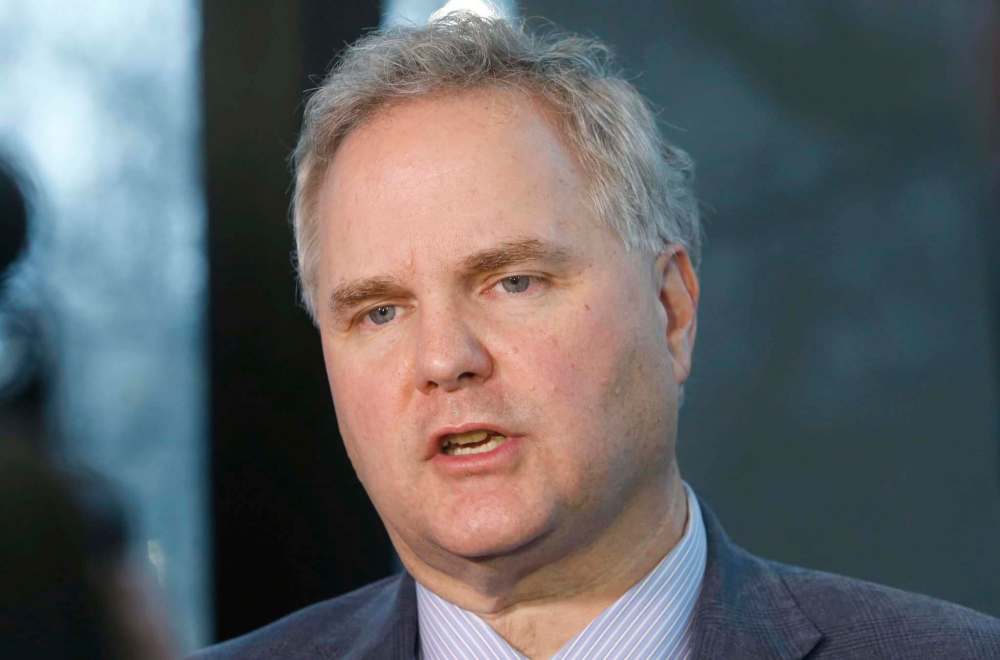New MRI boost for Dauphin, area residents
Advertisement
Read this article for free:
or
Already have an account? Log in here »
To continue reading, please subscribe:
Monthly Digital Subscription
$19 $0 for the first 4 weeks*
- Enjoy unlimited reading on winnipegfreepress.com
- Read the E-Edition, our digital replica newspaper
- Access News Break, our award-winning app
- Play interactive puzzles
*No charge for 4 weeks then billed as $19 every four weeks (new subscribers and qualified returning subscribers only). Cancel anytime.
Read unlimited articles for free today:
or
Already have an account? Log in here »
Hey there, time traveller!
This article was published 16/12/2018 (1949 days ago), so information in it may no longer be current.
A $6.2-million MRI machine put into service Monday in Dauphin aims to save rural Manitobans pain, money and time, some five years after it was promised.
“This is a wonderful day,” Premier Brian Pallister said, as Manitoba’s 15th magnetic-resonance imaging machine was unveiled at the Dauphin Regional Health Centre.
The former NDP government pledged to install such equipment in 2013.

A year ago, Manitoba Health’s wait-times reduction task force recommended no further MRI facilities or machines be installed anywhere in the province. Days later, the province said it would proceed with the Dauphin project, given the $5 million already spent on the plan.
At Monday morning’s news conference, the premier got contemplative and somewhat emotional in recounting his uncle’s last two years of life, circling between health care appointments.
“This investment will help people get care, sooner, closer to home, less personal pain and less personal expense for them, their families and people who love and care for them,” Pallister said.
He said the machine’s availability will cut down on long journeys to Brandon and Winnipeg. “It’s not a fun time,” he said.
The Parkland-region city’s MRI will be administered through Shared Health, formerly called Diagnostic Services Manitoba, which facilitates all diagnostic imaging outside of Brandon and Winnipeg but will include both next spring.
Shared Health chief executive officer Brock Wright said the Dauphin MRI is a early step towards better integrating various health services.
“We can definitely improve access to care, the quality of care, and we can bring care closer to home,” he said. “We’ve been siloed for many years.”
Wright said Dauphin’s MRI is expected to help with 3,500 exams a year, taking pressure off machines in Brandon and elsewhere. Manitoba recorded 87,221 MRI exams done by 16 machines in the fiscal year that ended in March.
Wright explained MRIs became commonplace in hospitals around the early 1990s, because they do some tasks better than CT (computerized topography) scans. Magnetic resonance imaging uses radio waves to display cartilage, soft tissue and ligaments, instead of just bones. CT scans use radiation, which involves more risk and is better suited for specific tasks, he explained.
NDP health critic Andrew Swan questioned why it took 12 months from the Pallister government green-lighting the project to having it open to the public.
“It’s a good day, I’m just sorry the government had to delay it for so long,” Swan said, noting much of the groundwork had already been done.
Health Minister Cameron Friesen said that stance was ironic, given the former NDP government had promised the project two years before leaving office.
“That’s actually hilarious,” he told the Free Press, accusing the NDP of repeatedly promising the project in a “desperate bid to get re-elected” and now trying to claim credit for it.
In any case, Doug Deans, chairman of the Dauphin Hospital Foundation, said officials approved the project because some residents can’t easily travel, and it could better serve Swan River and northern communities such as The Pas and Flin Flon.
“The resident population is generally less healthy, older and doesn’t have significant disposable income to travel to Winnipeg or Brandon to receive some of these services,’ Deans said.
“The spinoff for rural Manitoba is unbelievable.”
The MRI’s $6.2-million price tag includes the unit itself, as well as the construction involved.
Friesen said it was “pretty extraordinary to see” photos of the machine being installed.
“You got to see it — a big plug comes out of the building and you push the MRI in, and you hope nothing tips over while you’re doing it,” he said, enthusiastically.
dylan.robertson@freepress.mb.ca
History
Updated on Monday, December 17, 2018 6:12 PM CST: Final write through
Updated on Tuesday, December 18, 2018 11:49 AM CST: Corrects that this will be Manitoba's 15th magnetic-resonance imaging machine


